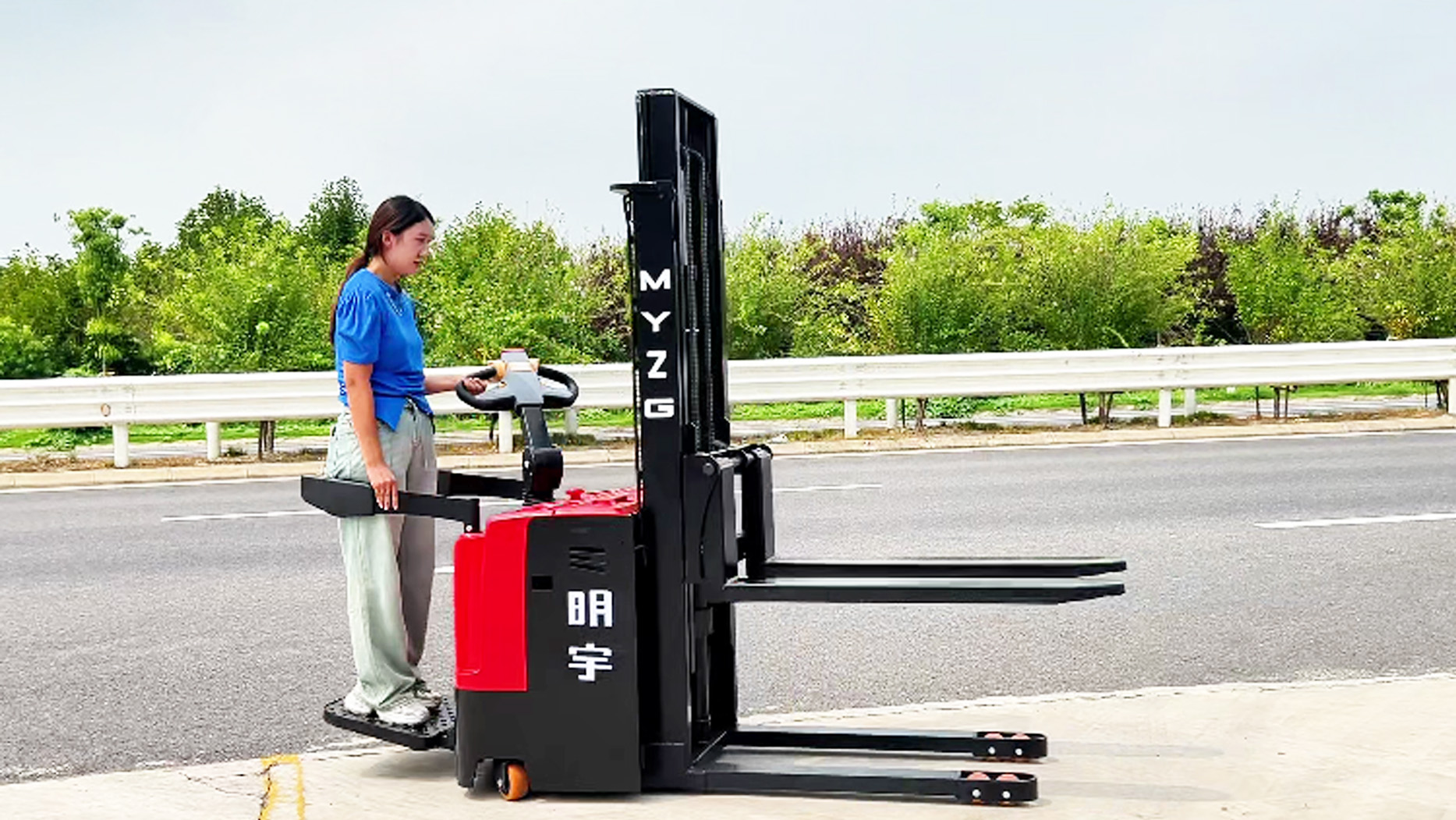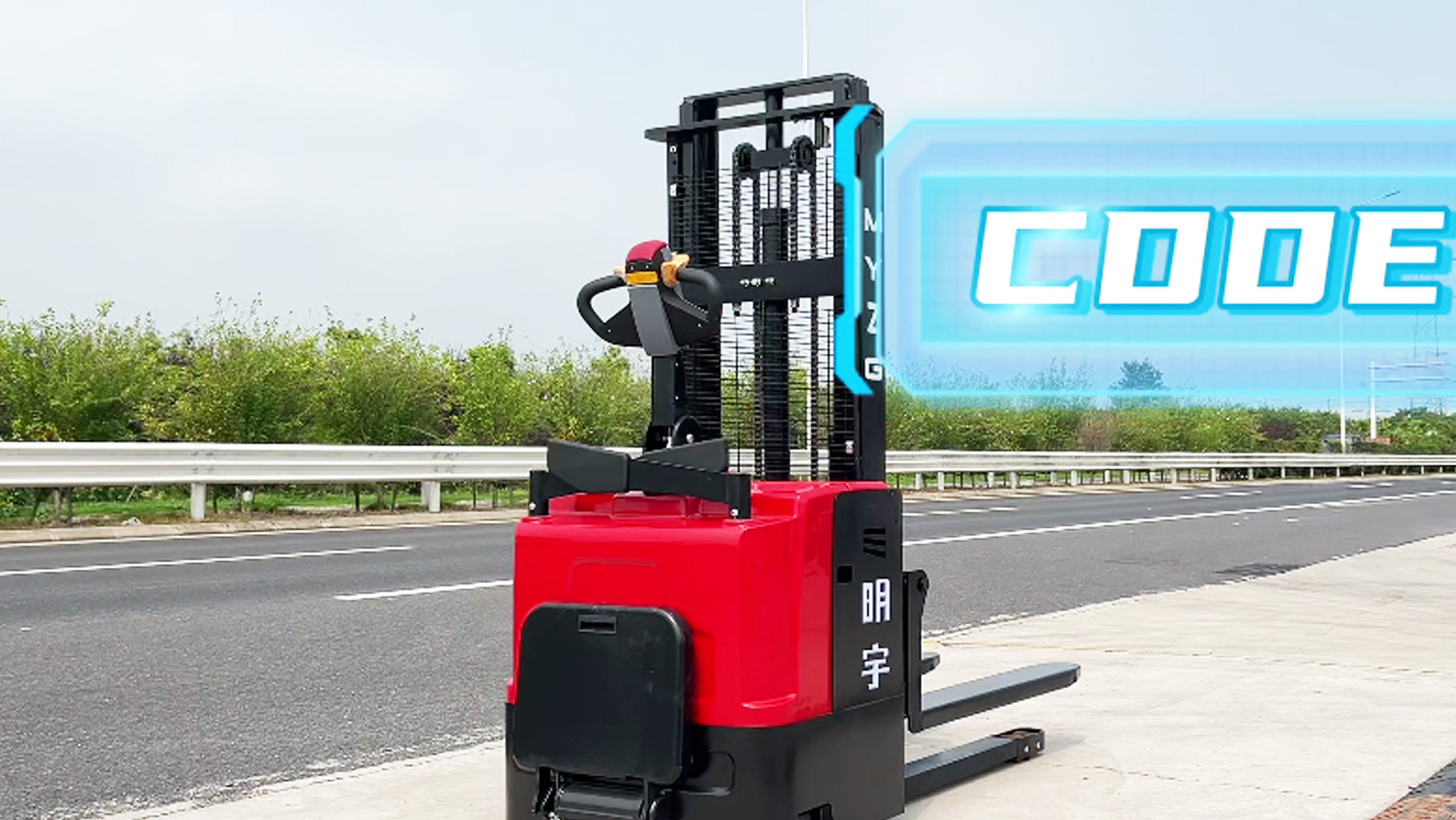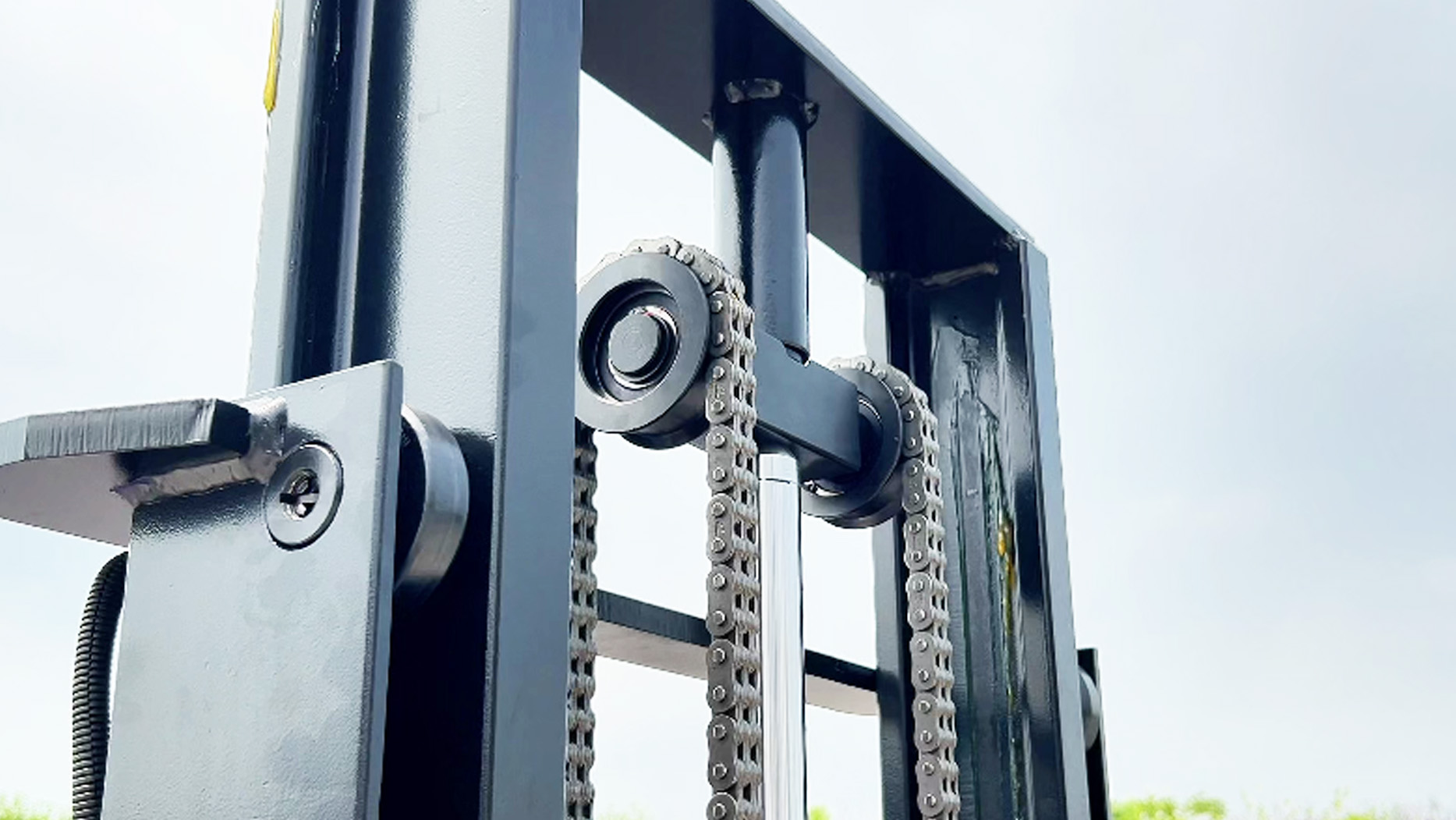I. Introduction
In the realm of efficient warehouse operations and streamlined material handling, the electric stacker stands as a vital piece of equipment. Designed for the precise vertical lifting and short-distance transportation of goods, stackers play a crucial role in optimizing storage density and facilitating smooth workflows. At the heart of every electric stacker's capability lies its battery – the silent energy source that dictates its reach, endurance, and overall productivity. Selecting the right battery is not merely a technical detail; it's a strategic decision that directly impacts operational uptime, maintenance costs, and the long-term efficiency of your vertical lifting tasks. This article serves as a comprehensive guide, illuminating the diverse landscape of stacker battery technologies. By exploring the characteristics, advantages, and disadvantages of each type, we aim to empower you with the knowledge necessary to make an informed choice – one that perfectly aligns with the unique demands of your stacker operations and propels your productivity to new heights.
II. Understanding Your Stacker's Power Demands
Before delving into the specifics of battery technologies, a thorough understanding of your stacker's unique power demands and operational context is paramount. The ideal battery choice is intrinsically linked to how your stacker is utilized and the environment in which it operates.
A. Stacker Type and Usage Intensity: The power requirements can vary significantly depending on the type of stacker in use. Walkie stackers, often used for lighter loads and shorter distances, may have different energy consumption patterns compared to more robust straddle stackers or reach stackers designed for higher lifts and heavier loads. The frequency and height of lifting and lowering operations are key determinants of energy consumption. Frequent high lifts will drain the battery more rapidly. Similarly, the distance the stacker travels and the weight of the loads being moved will influence the overall battery demand. Finally, the operational schedule – whether it's a single-shift operation with ample downtime or a demanding multi-shift environment – will dictate the need for battery capacity and charging speed.
B. Operating Environment: The conditions under which your stacker operates can significantly impact battery performance and longevity. Extreme temperatures, such as those found in cold storage facilities or areas with high ambient heat, can affect battery efficiency and lifespan. Indoor versus outdoor usage can also be a factor, considering potential exposure to moisture, dust, and temperature fluctuations. The condition of the flooring can influence the energy required for movement; uneven or inclined surfaces may draw more power. Additionally, the available space on the stacker for the battery and the layout of your facility for charging areas can impose limitations on battery size and type.
C. Charging Infrastructure and Time Constraints: The time available for recharging your stacker's battery is a critical consideration. Operations with long periods of inactivity between shifts can accommodate longer charging cycles. However, multi-shift environments often necessitate batteries capable of faster charging or even opportunity charging – short bursts of charging during breaks – to maintain continuous operation. The existing or planned charging infrastructure, including the voltage and amperage of your charging stations, must be compatible with the chosen battery technology.
III. Key Types of Stacker Batteries
The electric stacker market primarily utilizes three main types of batteries, each with its own set of characteristics that cater to different operational needs and priorities.
A. Lead-Acid Batteries: A mature and widely used technology, lead-acid batteries have been a staple in electric material handling equipment for decades.
Flooded Lead-Acid: This traditional design involves lead plates submerged in a liquid electrolyte solution.
Technology Overview: Electricity is generated through a chemical reaction between the lead plates and the sulfuric acid electrolyte. Recharging reverses this process. Flooded lead-acid batteries are known for their relatively simple construction and established recycling infrastructure.
Advantages: The primary advantage is their lower initial cost compared to other technologies. They are also known for their robustness and a well-developed recycling program.
Disadvantages: They require regular and meticulous watering to maintain electrolyte levels, which can be time-consuming and potentially hazardous. They have longer charging times, typically requiring several hours to fully recharge. Charging produces gassing, necessitating well-ventilated charging areas. They also demand regular maintenance, including cleaning terminals and performing equalization charges, and generally have a shorter lifespan in high-demand applications compared to lithium-ion.
Best Use Cases: Flooded lead-acid batteries are often suitable for lower intensity stacker applications with single shifts, where there is ample downtime for extended charging and dedicated personnel for routine maintenance.
Sealed Lead-Acid (AGM & Gel): These advanced lead-acid designs immobilize the electrolyte to prevent spills and reduce gassing.
Technology Overview: Absorbent Glass Mat (AGM) batteries contain the electrolyte absorbed in a fiberglass mat, while Gel batteries use a silica gel to solidify the electrolyte. This design minimizes stratification and allows for more flexible charging.
Advantages: A significant advantage is their lower maintenance requirement, eliminating the need for watering. They also exhibit reduced gassing, making them suitable for less ventilated areas (though ventilation is still recommended). Their spill-proof nature and the ability to be opportunity charged offer greater operational flexibility.
Disadvantages: Sealed lead-acid batteries have a higher initial cost than flooded options. They are also sensitive to overcharging, which can significantly shorten their lifespan. In heavy-duty stacker use, their lifespan may still be shorter than lithium-ion. They also tend to have higher internal resistance, potentially impacting performance under high discharge rates.
Best Use Cases: Sealed lead-acid batteries are often preferred for medium-intensity stacker applications, multi-shift operations where opportunity charging can extend runtime, and temperature-sensitive environments where electrolyte stratification in flooded batteries can be problematic.
B. Lithium-Ion Batteries: A rapidly growing and increasingly popular choice for electric stackers, lithium-ion technology offers significant advantages in efficiency and performance.
Technology Overview: Lithium-ion batteries utilize various chemistries, with Lithium Iron Phosphate (LFP) being a common and safe option for material handling equipment. These batteries offer high energy density and rapid charging capabilities, managed by a sophisticated Battery Management System (BMS) that ensures safe and optimal operation by monitoring cell voltage, temperature, and current.
Advantages: Key advantages include fast charging (often reaching full charge in 1-2 hours), enabling efficient opportunity charging during short breaks and maximizing uptime in multi-shift environments. They offer higher energy density, providing longer runtimes for a given battery size and weight, which can be particularly beneficial for stacker maneuverability. Their longer lifespan compared to lead-acid in demanding use, zero maintenance (no watering or equalization), consistent voltage throughout discharge for sustained performance, and lighter weight contribute to increased productivity and reduced operational overhead.
Disadvantages: The primary drawback is the higher initial cost compared to lead-acid batteries. While generally safe due to the BMS, there is a potential thermal runaway risk if the battery is severely damaged or the BMS malfunctions.
Best Use Cases: Lithium-ion batteries are ideally suited for high-intensity stacker applications, multi-shift operations with limited downtime, operations that prioritize efficiency, low maintenance, and extended runtimes, and applications where lighter battery weight can improve maneuverability or capacity.
C. Other Emerging Technologies: While lead-acid and lithium-ion dominate the stacker battery market, other technologies are being explored.
Nickel-Cadmium (NiCd): Once a common choice for industrial applications due to their robustness in extreme temperatures, NiCd batteries have largely been superseded by lead-acid and lithium-ion due to their "memory effect" (requiring full discharge before recharging), lower energy density, and the environmental concerns associated with cadmium.
Fuel Cells (hydrogen-powered): While offering very fast refueling and zero emissions, fuel cell technology for stackers is still in its early stages due to the lack of widespread hydrogen infrastructure and higher initial costs.
IV. Comparing Battery Types for Stackers: A Detailed Analysis
To make an informed decision, a thorough comparison of the different battery types in the context of stacker operations is essential, considering both immediate and long-term implications.
A. Initial Cost vs. Total Cost of Ownership (TCO): While lead-acid batteries typically have a lower initial cost, the total cost of ownership (TCO) over their lifespan can be significantly higher for demanding truck stacker applications. Factors contributing to this include higher energy consumption during less efficient charging, maintenance costs associated with watering and equalization, more frequent replacement costs due to a shorter lifespan, and lost productivity due to downtime for lengthy charging and maintenance. Lithium-ion batteries, despite a higher upfront investment, often offer a lower TCO in the long run due to their higher energy efficiency, minimal maintenance, longer lifespan, and reduced downtime thanks to fast and opportunity charging. Calculating the TCO based on your specific stacker usage patterns is crucial.
B. Performance and Efficiency in Vertical Lifting: Lithium-ion batteries generally offer superior performance and efficiency in vertical lifting tasks. Their higher energy density allows for more lift cycles per charge. The consistent voltage throughout discharge ensures that the stacker maintains optimal lifting speed and power, even as the battery depletes. The fast charging speed minimizes downtime, allowing the stacker to be back in operation quickly. Furthermore, the lighter weight of lithium-ion batteries can sometimes improve the stacker's overall efficiency and maneuverability, particularly in weight-sensitive applications. Lead-acid batteries can experience voltage drop during discharge, potentially leading to slower or less consistent lifting speeds.
C. Maintenance Requirements and Downtime: The difference in maintenance requirements is a significant factor. Lead-acid batteries necessitate regular and often time-consuming maintenance tasks like watering, terminal cleaning, and equalization charging. Neglecting these tasks can lead to reduced performance and a shortened lifespan. Lithium-ion batteries, on the other hand, require minimal to no routine maintenance, freeing up valuable labor and reducing the risk of human error. The significantly reduced downtime associated with lithium-ion's fast and opportunity charging capabilities translates directly to increased productivity for stacker operations.
D. Lifespan and Replacement Costs in Stacker Use: In demanding stacker applications with frequent lifting and charging cycles, lithium-ion batteries typically exhibit a considerably longer lifespan (often 2-3 times that of lead-acid) due to their superior cycle life. While the replacement cost of a lithium-ion battery is higher, its extended lifespan can result in fewer replacements over the stacker's operational life, contributing to a lower TCO. The lifespan of lead-acid batteries in stackers is heavily dependent on proper maintenance and can be significantly shortened by over-discharging or infrequent watering, leading to more frequent and costly replacements.
E. Environmental Impact and Sustainability: Both battery types have environmental considerations. The production and disposal of lead-acid batteries involve hazardous materials, although a robust recycling infrastructure exists. Lithium-ion batteries also have environmental concerns related to the mining of raw materials and manufacturing processes. However, their longer lifespan and higher energy efficiency can lead to a lower overall carbon footprint over their use. The recyclability of lithium-ion batteries is an evolving area with increasing focus and advancements.
F. Safety Considerations Specific to Stackers: Lead-acid batteries in stackers pose safety risks associated with acid spills during maintenance and gassing during charging, requiring proper handling and ventilation, especially in potentially confined warehouse spaces. Lithium-ion batteries have a potential risk of thermal runaway if damaged or improperly managed. However, the integrated Battery Management System (BMS) in lithium-ion batteries provides crucial safety features like overcharge and over-discharge protection, temperature monitoring, and cell balancing, mitigating these risks when the battery is used correctly.
V. Making the Right Choice for Your Stacker: A Step-by-Step Guide
Selecting the ideal battery for your stacker requires a structured approach that carefully considers your specific operational needs and long-term objectives.
Step 1: Clearly define your stacker's power requirements and usage patterns: Analyze the type of stacker, the intensity of its use (lift frequency, load weights, travel distances, shift schedules), and any specific performance demands.
Step 2: Research and compare the characteristics of different battery types relevant to stacker applications: Understand the initial cost, TCO, performance in vertical lifting, efficiency, maintenance needs, lifespan, environmental impact, and safety considerations of flooded lead-acid, sealed lead-acid, and lithium-ion batteries in the context of stacker operation.
Step 3: Calculate the Total Cost of Ownership for each viable option considering stacker-specific usage: Project the long-term expenses associated with each battery type based on your anticipated energy consumption, maintenance costs, replacement frequency, and potential downtime for your stacker operations.
Step 4: Consider your operational constraints and priorities: Evaluate factors such as acceptable downtime, maintenance capabilities and resources, budget limitations (both upfront and long-term), weight restrictions of the stacker, and any environmental or safety regulations.
Step 5: Consult with stacker and battery suppliers for tailored recommendations: Seek expert advice from reputable suppliers who can provide insights specific to your stacker model and operational requirements, potentially offering trials or detailed cost-benefit analyses.
VI. Conclusion
Choosing the right battery is a pivotal decision that significantly impacts the performance, efficiency, and overall cost-effectiveness of your stacker operations. While lead-acid batteries may offer a lower initial investment for less demanding applications, lithium-ion technology presents compelling advantages for many stacker users, particularly those in high-intensity, multi-shift environments where maximizing uptime, minimizing maintenance, and achieving long-term cost savings are paramount. Ultimately, the optimal battery choice for your stacker necessitates a comprehensive evaluation of your unique power demands, operational context, and long-term financial and sustainability goals. By carefully weighing the trade-offs between initial cost and total cost of ownership, performance in vertical lifting, maintenance requirements, lifespan, and safety, you can select the battery that will truly power your vertical lift operations with maximum efficiency and reliability.
Post time:Apr.08.2025



